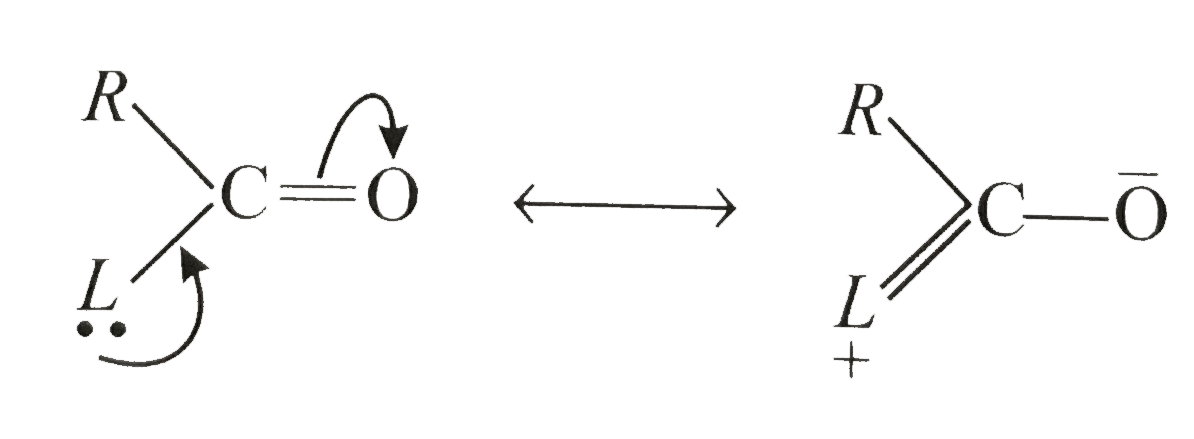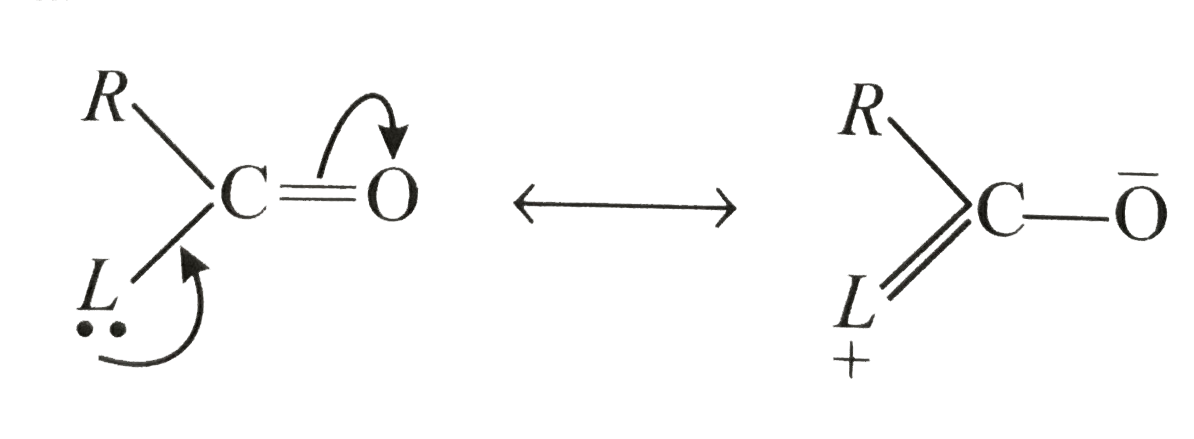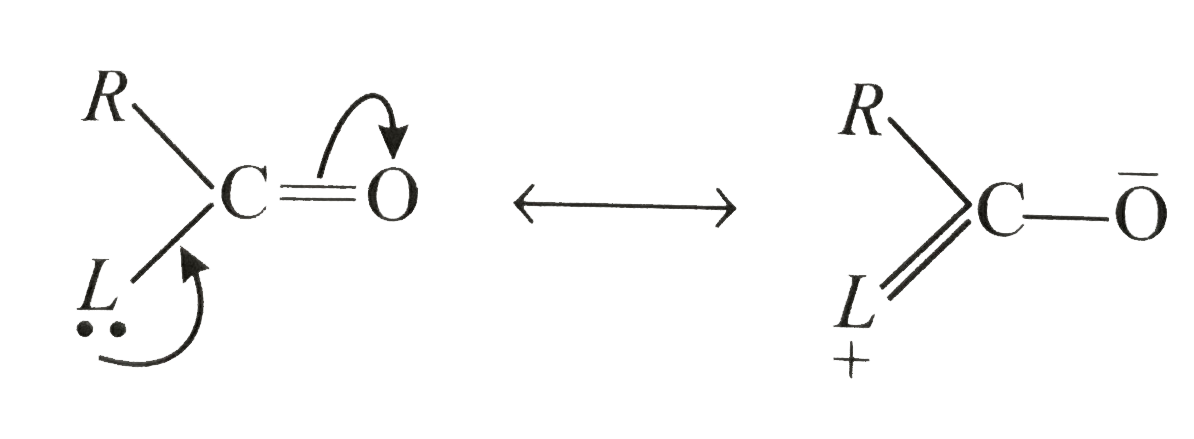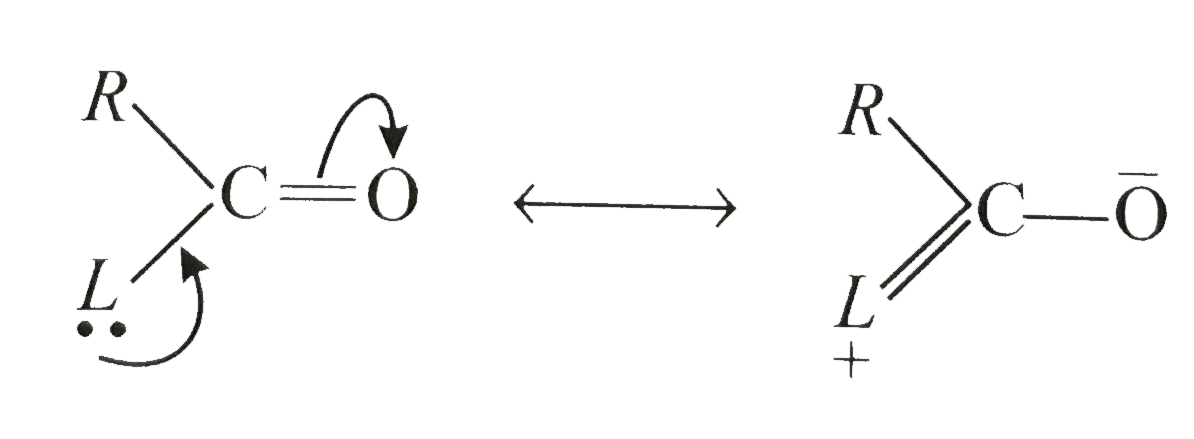Reactivity of acids in esterification follows the order .
HCOOH>CH3COOH>RCH2COOH>R2CHCOOH>R3CCOOH
CH3COOH>HCOOH>R3CCOOH>R2CHCOOH>RCH2COOH
R3CCOOH>R2CHCOOH>RCH2COOH>CH3COOH>HCOOH
None of the above
The correct Answer is:A
To determine the reactivity of acids in esterification, we need to analyze the structure of the acids and how their substituents affect the electron density at the carbonyl carbon. The order of reactivity can be established based on the electron-donating or electron-withdrawing effects of the alkyl groups attached to the carboxylic acid.
1. Understanding Esterification:
Esterification is a reaction between a carboxylic acid (RCOOH) and an alcohol (R'OH) to form an ester (RCOOR') and water. The reaction is typically catalyzed by an acid.
2. Identifying the Acid Structure:
The general structure of a carboxylic acid is RCOOH, where R is the alkyl or aryl group. The reactivity in esterification depends on the nature of the R group.
3. Electron Density at Carbonyl Carbon:
The carbonyl carbon (C=O) in the carboxylic acid is electrophilic, meaning it is susceptible to nucleophilic attack. The electron density on this carbon can be affected by the substituents (R groups).
4. Effect of R Groups:
- Electron-donating groups (like alkyl groups) increase the electron density on the carbonyl carbon, making it less electrophilic and thus less reactive in esterification.
- Conversely, electron-withdrawing groups (like hydrogen in formic acid) decrease the electron density, making the carbonyl carbon more electrophilic and more reactive.
5. Order of Reactivity:
- Formic acid (HCOOH) has no alkyl group, making it the most reactive.
- Acetic acid (CH3COOH) has a methyl group, which is weakly electron-donating, making it less reactive than formic acid.
- Butyric acid (C2H5COOH) has an ethyl group, which is more electron-donating than a methyl group, making it even less reactive.
- Propionic acid (C3H7COOH) has a propyl group, further decreasing reactivity.
- Higher alkyl groups (like isobutyric acid) will have even lower reactivity due to increased electron-donating effects.
6. Final Order of Reactivity:
The order of reactivity of the acids in esterification is:
- Formic acid (most reactive)
- Acetic acid
- Propionic acid
- Butyric acid
- Higher alkyl acids (least reactive)
Thus, the order of reactivity of acids in esterification follows:
HCOOH > CH3COOH > C2H5COOH > C3H7COOH > R groups
Esterification is a reaction between a carboxylic acid (RCOOH) and an alcohol (R'OH) to form an ester (RCOOR') and water. The reaction is typically catalyzed by an acid.
The general structure of a carboxylic acid is RCOOH, where R is the alkyl or aryl group. The reactivity in esterification depends on the nature of the R group.
The carbonyl carbon (C=O) in the carboxylic acid is electrophilic, meaning it is susceptible to nucleophilic attack. The electron density on this carbon can be affected by the substituents (R groups).
- Electron-donating groups (like alkyl groups) increase the electron density on the carbonyl carbon, making it less electrophilic and thus less reactive in esterification.
- Conversely, electron-withdrawing groups (like hydrogen in formic acid) decrease the electron density, making the carbonyl carbon more electrophilic and more reactive.
- Formic acid (HCOOH) has no alkyl group, making it the most reactive.
- Acetic acid (CH3COOH) has a methyl group, which is weakly electron-donating, making it less reactive than formic acid.
- Butyric acid (C2H5COOH) has an ethyl group, which is more electron-donating than a methyl group, making it even less reactive.
- Propionic acid (C3H7COOH) has a propyl group, further decreasing reactivity.
- Higher alkyl groups (like isobutyric acid) will have even lower reactivity due to increased electron-donating effects.
The order of reactivity of the acids in esterification is:
- Formic acid (most reactive)
- Acetic acid
- Propionic acid
- Butyric acid
- Higher alkyl acids (least reactive)
HCOOH > CH3COOH > C2H5COOH > C3H7COOH > R groups
Topper's Solved these Questions
- BOOK - FIITJEECHAPTER - CARBOXYLIC ACIDS AND ITS DERIVATIVESEXERCISE - ASSIGNMENT PROBLEMS OBJECTIVE (LEVEL - II)16videos
CARBOXYLIC ACIDS AND ITS DERIVATIVES
- BOOK - FIITJEECHAPTER - CARBOXYLIC ACIDS AND ITS DERIVATIVESEXERCISE - ASSIGNMENT PROBLEMS OBJECTIVE ( REASONING TYPE QUESTIONS )5videos
CARBOXYLIC ACIDS AND ITS DERIVATIVES
- BOOK - FIITJEECHAPTER - CARBOXYLIC ACIDS AND ITS DERIVATIVESEXERCISE - ASSIGNMENT PROBLEMS SUBJECTIVE (FILL IN THE BLANKS )2videos
CARBOXYLIC ACIDS AND ITS DERIVATIVES
- BOOK - FIITJEECHAPTER - CARBOHYDRATES, AMINO ACIDS, POLYMERS AND PRACTICAL ORGANIC CHEMISTRYEXERCISE - EXERCISE4videos
CARBOHYDRATES, AMINO ACIDS, POLYMERS AND PRACTICAL ORGANIC CHEMISTRY
- BOOK - FIITJEECHAPTER - CHEMICAL ENERGETICS EXERCISE - NUMERICAL BASED QUESTIONS2videos
CHEMICAL ENERGETICS
Similar Questions
The reactivity of acid derivatives in general follows the order:

The above order of reactivity can be explained in terms of the:
(i) Basicity of leaving group (ii) Resonance effect
(iii) Inductive effect
Weaker is the basic character of leaving group, more is the reactivity of acid derivative. In general, all the acid derivatives show resonance as follows:

More is the stabilization, lesser is the reactivity and vice -versa.
Which is the most reactive acid derivative?View SolutionThe reactivity of acid derivatives in general follows the order :
_E01_760_Q01.png)
The above order of reactivity can be explained in terms of the :
(i) Basicity of leaving group (ii) Resonance effect (iii) Inductive effect Weaker is the basic character of leaving group, more is the reactivity of acid derivative. In general, all the acid derivatives show resonance as follows:
_E01_760_Q02.png)
More is the stablization, lesser is the reactivity and vice-versa.
Which among the following ester is most reactive towards nucleophilic attack ?View Solution
Knowledge Check
- Question 1 - Select One
The reactivity of halogen acids with ether follos the order :
AHI>HBr>HClBHCl>HBr>HICHBr>HI>HClDHCl>HI>HBr - Question 2 - Select One
The reactivity of acid derivatives in general follows the order:

The above order of reactivity can be explained in terms of the:
(i) Basicity of leaving group (ii) Resonance effect
(iii) Inductive effect
Weaker is the basic character of leaving group, more is the reactivity of acid derivative. In general, all the acid derivatives show resonance as follows:

More is the stabilization, lesser is the reactivity and vice -versa.
Which among the following acid halides is the most reactive?ACH3COBrBCH3COClCCH3COIDAll are equally reactive - Question 3 - Select One
The reactivity of acid derivatives in general follows the order :
_E01_759_Q01.png)
The above order of reactivity can be explained in terms of the :
(i) Basicity of leaving group (ii) Resonance effect (iii) Inductive effect Weaker is the basic character of leaving group, more is the reactivity of acid derivative. In general, all the acid derivatives show resonance as follows:
_E01_759_Q02.png)
More is the stablization, lesser is the reactivity and vice-versa. Which of the most reactive acid derivative ?AR-COClB(RCO)2OCRCOORDRCONH2
The reactivity of acid derivatives in general follows the order :
_E01_761_Q01.png)
The above order of reactivity can be explained in terms of the :
(i) Basicity of leaving group (ii) Resonance effect (iii) Inductive effect Weaker is the basic character of leaving group, more is the reactivity of acid derivative. In general, all the acid derivatives show resonance as follows:
_E01_761_Q02.png)
More is the stablization, lesser is the reactivity and vice-versa.
Acid derivatives although contain −O∣∣C− group, yet do not undergo the usual properties of carbonyl group. It is due toView SolutionThe reactivity of acid derivatives in general follows the order:

The above order of reactivity can be explained in terms of the:
(i) Basicity of leaving group (ii) Resonance effect
(iii) Inductive effect
Weaker is the basic character of leaving group, more is the reactivity of acid derivative. In general, all the acid derivatives show resonance as follows:

More is the stabilization, lesser is the reactivity and vice -versa.
Acid derivatives although contain −CO∣∣C− group yet do not undergo the usual properties of carbonyl group. It is due to :View SolutionThe reactivity of acid derivatives in general follows the order :
_E01_758_Q01.png)
The above order of reactivity can be explained in terms of the :
(i) Basicity of leaving group (ii) Resonance effect (iii) Inductive effect Weaker is the basic character of leaving group, more is the reactivity of acid derivative. In general, all the acid derivatives show resonance as follows:
_E01_758_Q02.png)
More is the stablization, lesser is the reactivity and vice-versa.
Which among the following anions is the most basic ?View SolutionThe reactivity of acid derivatives in general follows the order :
_E01_762_Q01.png)
The above order of reactivity can be explained in terms of the :
(i) Basicity of leaving group (ii) Resonance effect (iii) Inductive effect Weaker is the basic character of leaving group, more is the reactivity of acid derivative. In general, all the acid derivatives show resonance as follows:
_E01_762_Q02.png)
More is the stablization, lesser is the reactivity and vice-versa.
Which of the following compounds will be most easily hydrolysed ?View SolutionThe reactivity of acid derivatives in general follows the order:

The above order of reactivity can be explained in terms of the:
(i) Basicity of leaving group (ii) Resonance effect
(iii) Inductive effect
Weaker is the basic character of leaving group, more is the reactivity of acid derivative. In general, all the acid derivatives show resonance as follows:

More is the stabilization, lesser is the reactivity and vice -versa.
Which among the following anions is the most basic ?View Solution

